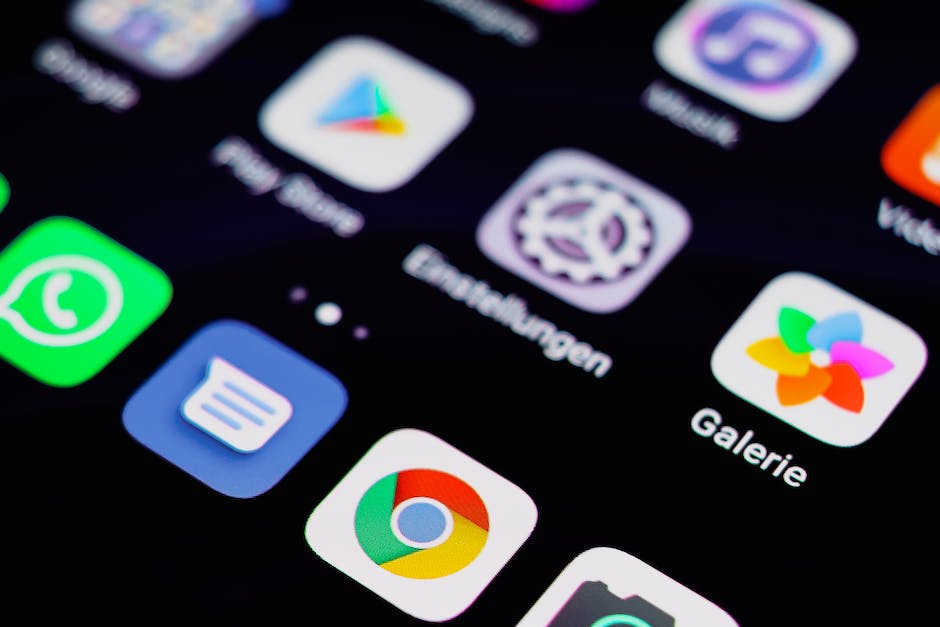Artificial Intelligence (AI), a revolutionary technology, is carving its way across various spheres, delivering enhancements and automations that were once considered impossible. A significant area of its influence is in the creation of sophisticated, tailor-made content designed to engage more effectively with the audience. The immense potential of AI-driven content, its impact on user experience, and its possible future can only be understood by first examining its roots, unique aspects, types, and the advanced mechanisms behind it. We must also critically assess the ethics and limitations that come along with this disruptive technology. So, let’s commence our journey through the fascinating world of AI-driven content, where bits and algorithms come together to tell compelling stories.
Characteristics and Types of AI-Driven Content
Delineating the Distinctive Features And Categories of AI-Driven Content
AI-driven content, an emerging facet of artificial and machine learning technologies, flaunts diverse and distinguishing features which are shaping a new propensity in various industries ranging from marketing to research. This discourse elucidates these distinctive features while scrutinizing the categories within this domain.
Robust AI content algorithms are exceptionally proficient in producing high-quality content, exhibiting creativity, coherence, and linguistic sophistication akin to human-generated compositions. These AI systems leverage advanced machine learning algorithms and large linguistic databases to contextually understand and generate content.
One of the salient characteristics of AI-driven content is its immense scalability. Traditional content production limits the volume of content generation due to human-based limitations. However, AI systems can generate massive volumes of content in a short period, effectively circumventing these limitations.
Another quintessential trait of AI content is its personalization capabilities. AI algorithms analyze user behavior, preferences, and patterns, catering personalized recommendations. This feature can enhance user interaction and engagement, offering a more fulfilling user experience.
Additionally, AI can generate multilingual content, thereby breaking down linguistic barriers and broadening the reach of the content to a global audience. This ability to translate and generate content in multiple languages is another distinguishing feature of AI-driven content.
On the categorization front, AI-driven content primarily falls into three categories:
- AI-written content
- AI-assisted content
- AI-enhanced content
AI-written content is predominantly generated by advanced AI algorithms with minimum to moderate human intervention. It is commonly used in large-scale data-driven industries, such as financial, sports, and news reporting.
In the AI-assisted category, the technology aids human writers by providing real-time suggestions to improve the quality, relevance, and impact of the content. This blend of human creativity and AI innovation heightens the value of the content and accelerates the writing process.
Finally, AI-enhanced content employs AI technologies post-production, to optimize, enrich, and personalize the content for different user groups. The AI-enhanced category commonly infuses SEO tools, sentiment analysis, and other optimization techniques to maximize the potential reach and impact of content.
However, despite many breakthroughs, it is worthy to note that AI-driven content still faces challenges and opportunities. The questions of ethical implications, AI bias, and quality control necessitate further exploration and assessment in order to fully harness the potential of AI-driven content.
In navigating the vibrant landscape of AI-driven content, it is integral to appreciate these distinguishing features and categories and to contemplate upon the ramifications and prospective advancements in this captivating intersection of AI and content creation. Considerations towards the ethical implications and associated limitations prop up the need for continuous refinement and advancement in the realm of AI-driven content.

Role of Artificial Intelligence (AI) in Content Generation
Continuing our exploration of artificial intelligence’s role in content generation, let us delve into a subfield that merits particular attention, namely, the concept known as natural language generation (NLG). This AI technology enables the synthesis of human language in a coherent, grammatically correct and, often, contextually relevant manner. Incorporating elements such as sentiment analysis, NLG can significantly augment AI’s prowess in generating content that isn’t just filled with cold, hard facts, but tinged with a layer of emotional depth akin to human communication.
As AI further imbibes linguistic nuances, we see its consequent capability to generate dynamic content – a significant step from static, templated content. Dynamic content changes with variances in user inputs or context, leading to a personalized experience. In essence, it’s akin to a skilled potter molding clay, expertly adapting to the nuances of shape, size, and design that each individual piece necessitates.
A notable illustration of this is in the realm of journalistic reporting, particularly for data-intensive domains like sports or finance. Here, AI has successfully been employed to generate news reports and articles that are virtually undistinguishable from human-written pieces. With well-defined inputs and outputs, these domains provide the ideal testing ground for AI’s content generation capabilities.
However, as we navigate this unchartered terrain, the issue of potential disparities between AI-generated content and human-produced content comes to the fore. This divergence can take many forms, from subtle differences in tone or style, to more significant inconsistencies in depth of analysis or critical thinking. It is then incumbent upon us, as researchers and academics, to finesse AI systems to minimize these disparities.
Whilst AI has made significant strides in content generation, it would be remiss not to acknowledge its complementing force – Big Data. The vast troves of user data play a pivotal role in ‘teaching’ AI to amass and mimic human-like content generation skills. It is this intellectual symbiosis between AI and Big Data that is sculpting a new paradigm in the content creation landscape.
Yet, there lie several potholes on this trailblazing path. Ensuring the privacy and security of user data, overcoming biases in algorithmic patterns, and maintaining ethical boundaries remain formidable challenges. Indeed, the central conundrum we contend with is how to strike a fine balance between leveraging AI’s capabilities and respecting user autonomy and privacy.
In conclusion, it’s clear that AI’s intersection with content creation is set to redefine the manner we interact with digital media. However, on this journey of transformation, it is incumbent upon us to vigilantly monitor its trajectory, intervening when necessary to ensure it remains a force of enablement, rather than disruption. Beyond doubt, this dynamic field presents a fertile ground for future research, and it must continue to be explored, nourished, and refined. It is, after all, not an end in itself, but a consistent journey towards improvement and perfection.

Ethics and Limitations of AI-Driven Content
As we foray into deeper realms of the use of AI in content creation, it is of paramount importance to consider the ethical questions that arise. These entail scrutiny in distinct areas such as data privacy, content authenticity, the potential for manipulating perceptions, and more. There remains a critical need for appropriate regulation mechanisms, transparent decision-making, and an ongoing dialogue on moral principles guiding this burgeoning industry.
Preserving privacy can be a whirlwind card in Artificial Intelligence content creation. AI notoriously depends on large data sets for machine learning, which often encroach on personal data boundaries. Anonymous and aggregated data collection practices can safeguard this information. However, the potential misuse of such data remains. Although AI can provide personalized content, misuse remains a concern, leading to infringement on user autonomy.
Another significant issue perturbing the world of AI in content creation is authenticity. AI-driven algorithms can, with surprising accuracy, reproduce the writing style of individuals, simulate their responses, and replicate unique writing idiosyncrasies. This aptitude risks creating counterfeit content that is near indistinguishable from genuinely human-created material. Therefore, it is essential to establish mechanisms that permit transparent sourcing and detection of AI-generated content to prevent deception and misuse.
The content creation industry must grapple with the potential of AI to manipulate perceptions. Using data-driven insights, AI algorithms can potentially influence behaviors and attitudes, creating an ethical quandary. While this may be valuable in fields like advertising or public health outreach, it can also veer into the crossing line of manipulation. As AI algorithms continue to improve, the responsibility of differentiating between persuasive communication and unethical manipulation looms larger.
Interpreting the limitations of the technology should also not be discounted. AI technology, despite the strides made, remains in its infancy, with uncertainties looming over predictability and performance in varying scenarios. Therefore, relying completely on AI, without human supervision may lead to unforeseen consequences. The loss of human jobs to AI technology is an impending eventuality, and striking a balance between human intellect and AI capabilities continues to remain a challenge.
The use of AI in content creation, while being a boon, comes with a broad array of ethical considerations and limitations. Devising a prudent path to harnessing the benefits, while mitigigating deleterious outcomes of the technology is critical. This requires the collaborative input of stakeholders – scientists, policymakers, ethicists, and society at large. While the journey towards a deeply integrated AI content ecosystem continues, the narrative should always remain underpinned by ethical responsibility and human oversight. With empathy and discretion at the helm, AI stands to substantially impact content creation in a manner that is both fruitful and ethically robust.

Future Trends in AI-Driven Content
As we navigate the horizon of AI-driven content, it becomes increasingly apparent that the convergence of artificial intelligence (AI) and content creation is far-reaching and ceaselessly shaping the industry landscape. Yet, even as we stand at the precipice of uncharted territory, it is incumbent on us to grapple with an issue that is perhaps less groundbreaking but no less critical – the preservation of creative integrity in the face of AI proliferation.
Evidently, the automation of content creation by AI introduces unique dichotomies. The promise of efficiency and the opportunity for creativity is juxtaposed against the concern for forged and manipulated content. AI’s proficiency in mimicking human discourse, while remarkable, has catalyzed a deep-seated concern for authenticity within AI-produced content. Fraudulent ‘deepfake’ content, an unfortunate byproduct of AI advancement, serves as a tangible manifestation of this issue, forcing us to contemplate the paradox that comes with AI’s capabilities. While AI could offer a conduit for innovation, it simultaneously poses the risk of diluting originality.
Accordingly, splashed across the canvas of AI-led innovation is the question of detectability of AI-produced content. Transparent sourcing and detection mechanisms are pivotal, not only to allay public skepticism but also to preserve the connection between the content and its creator, fostering trust in the technological advancements.
Beyond its procedural implications, the AI content metamorphosis carries a significant ethical dimension, evidenced by its potential to craft narratives that subtly manipulate user perceptions. It is vital that regulators and industry pioneers consider the ethical ramifications of such capabilities. How we manage these challenges will largely define the future trajectory of this transformative technology.
This alludes to a sobering reality that while AI may possess a semblance of autonomy, any absence of human supervision could have dire consequences. The potential for job loss, a recurrent theme in discourses around automation, further underlines the need for a balanced and symbiotic relationship to evolve between AI and humans.
It emerges as a vital truth that our journey through the AI revolution necessitates the guidance of multiple stakeholders, from scientists to ethicists, policymakers to the end-users. The interplay between technology and society calls for a holistic approach – a receptive dialogue that prioritizes ethical clarity and navigates the complex landscape of AI-powered content creation.
In conclusion, navigating the future of AI-driven content requires us to straddle the line between embracing the unprecedented opportunities presented by AI and remaining vigilant in our ethical responsibility. As we step into a future so vigorously shaped by AI, it is these challenges that serve as a sobering reminder of the merits of human touch in a rapidly digitizing world. Nonetheless, the uncharted horizon of AI-driven content remains a luring vista, teeming with opportunities for growth, innovation, and refinement.

Photo by nickmorrison on Unsplash
At this juncture, the future of AI-driven content seems filled with immense possibility and exciting innovation. The continued advancements and integration with other emerging technologies are envisioned to elevate content creation techniques and end-user experiences. With this, we must remain mindful of the ethical and creative limitations of AI. These considerations will ensure a balanced evolution where AI augments human creativity rather than replacing it. It is then we will truly appreciate the blend of art and artificial intelligence, enabling us to explore uncharted territories in the realm of content creation. Journeying through this digital revolution, we should continue our responsible exploration of artificial intelligence and its profound impact on our world.
